Programmable wave-based computer advances analog computing
 Researchers propose a wave-based, programmable 'meta-computer' that performs various analog computations at the speed of electromagnetic waves, expanding possibilities for analog computing.
Researchers propose a wave-based, programmable 'meta-computer' that performs various analog computations at the speed of electromagnetic waves, expanding possibilities for analog computing.

 Subscribe to our Nanotechnology Spotlight feed
Subscribe to our Nanotechnology Spotlight feed
 Researchers propose a wave-based, programmable 'meta-computer' that performs various analog computations at the speed of electromagnetic waves, expanding possibilities for analog computing.
Researchers propose a wave-based, programmable 'meta-computer' that performs various analog computations at the speed of electromagnetic waves, expanding possibilities for analog computing.
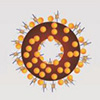 Magnetic nanomotors enable highly efficient capture and precise identification of emerging pollutants at part-per-trillion concentrations, offering a sustainable solution for water quality monitoring.
Magnetic nanomotors enable highly efficient capture and precise identification of emerging pollutants at part-per-trillion concentrations, offering a sustainable solution for water quality monitoring.
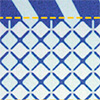 Researchers have created a novel memristive hardware framework that enables artificial intelligence systems to efficiently explain their decision-making process.
Researchers have created a novel memristive hardware framework that enables artificial intelligence systems to efficiently explain their decision-making process.
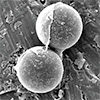 Researchers develop miniature motorized sensors employing genetically engineered viruses to selectively detect E. coli bacteria with speed and accuracy down to medically meaningful concentrations.
Researchers develop miniature motorized sensors employing genetically engineered viruses to selectively detect E. coli bacteria with speed and accuracy down to medically meaningful concentrations.
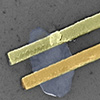 Researchers have developed 2D perovskite memristors that strengthen electrical resistance in response to light, mimicking learning in biological synapses. This could enable neuromorphic AI that learns autonomously through experience.
Researchers have developed 2D perovskite memristors that strengthen electrical resistance in response to light, mimicking learning in biological synapses. This could enable neuromorphic AI that learns autonomously through experience.
 Researchers have created an artificial synapse device that displays plasticity and learning ability by merging a photoelectric perovskite material with an organic ferroelectric polymer. The advance offers a pathway to intelligent electronics and insights into the brain.
Researchers have created an artificial synapse device that displays plasticity and learning ability by merging a photoelectric perovskite material with an organic ferroelectric polymer. The advance offers a pathway to intelligent electronics and insights into the brain.
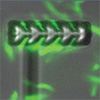 Researchers develop 3D-printed microbots that harness living bacteria as onboard engines to enable wireless control using only structured light patterns.
Researchers develop 3D-printed microbots that harness living bacteria as onboard engines to enable wireless control using only structured light patterns.
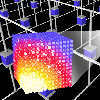 Phase change memory is an emerging technology with great potential for advancing analog in-memory computing, particularly in deep neural networks and neuromorphic computing.
Phase change memory is an emerging technology with great potential for advancing analog in-memory computing, particularly in deep neural networks and neuromorphic computing.